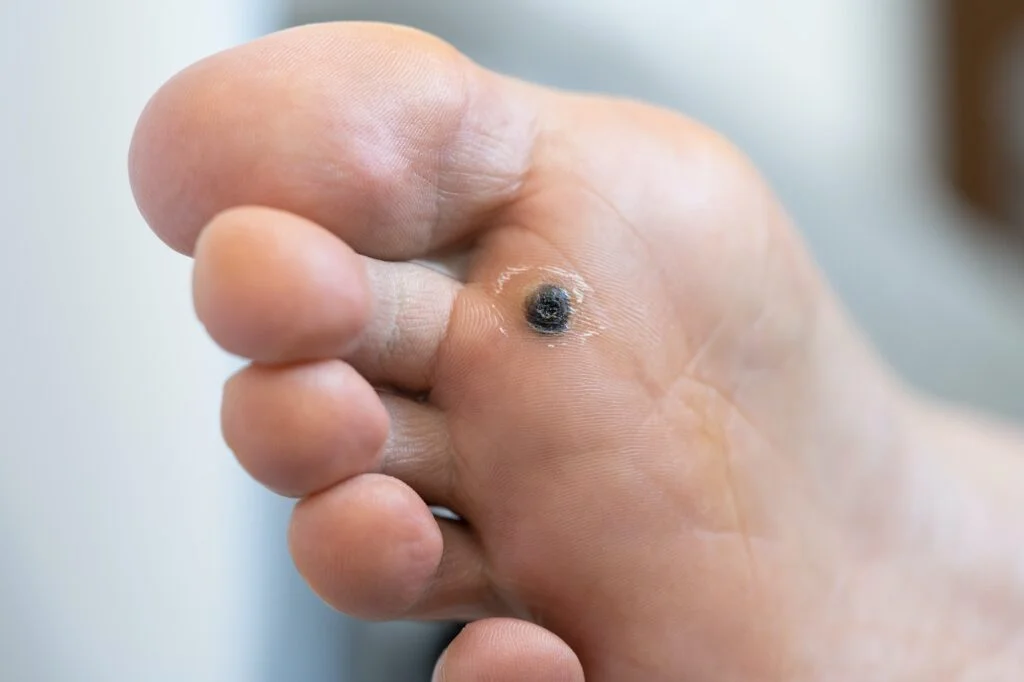What Are Warts?
A wart in an infection caused by a virus, which can invade your skin through small cuts or breaks. Over time, the wart develops into a hard, rough growth on the surface of the skin. A wart is most commonly seen on the bottom of the foot (plantar wart), but can also appear on the top. Children, teens, and people with allergies or weakened immune systems are more vulnerable to the wart virus.
Warts can appear anywhere on the body. When they are on the bottom of your foot, they are called plantar warts because they occur on the sole of your foot.
Because the bottom of the foot has a lot of pressure, the warts grow inward into the tissue of your foot. Sometimes they are covered by a callus that you can see on the surface of the skin.
Plantar warts are caused by the human papillomavirus which enters the body through a break in the skin. This virus is very contagious and can be picked up in public areas such as swimming pools, showers and locker rooms. Teenagers and children are prone to getting this virus as are those with weakened immune systems.
Warts - Symptoms
Warts may appear spongy, with tiny red, brown, or black spots. They can grow up to an inch or more across, occurring alone (solitary) or with smaller warts clustered nearby (mosaic). Warts are sometimes mistaken for corns or calluses. They can persist for years and recur in the same spot. If left untreated, warts can spread to other parts of the foot or even to the hands or other areas of the body.
- A rough, grainy growth on the bottom of the foot
- A callus that may have covered the wart
- Black pinpoints on the surface of the wart
- Pain or tenderness when walking or standing
Evaluation
How Does My Podiatrist Treat Warts?
Medication
Curettage
Laser
What Can I Do About Warts
- Always cover feet with shower shoes or flip-flops in public areas.
- Keep your feet clean and dry.
- Change socks and shoes daily.
- Don’t touch any warts that you have as they can spread.




